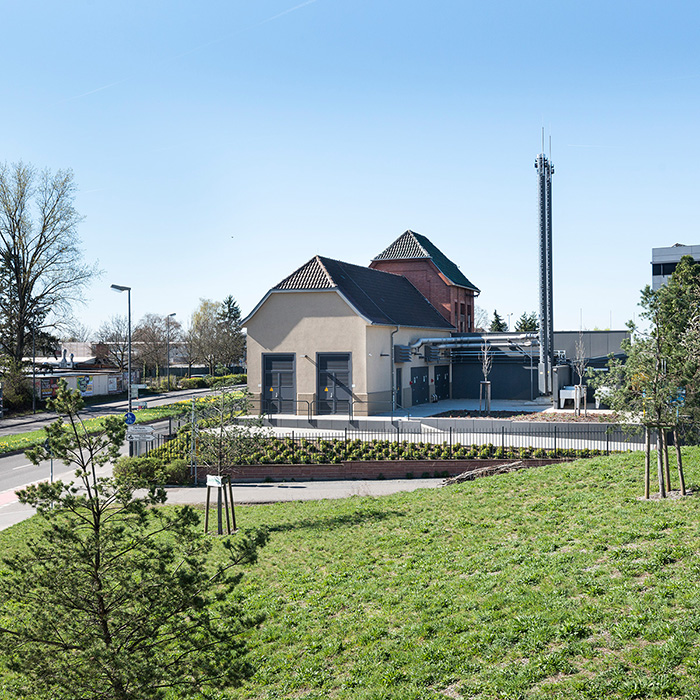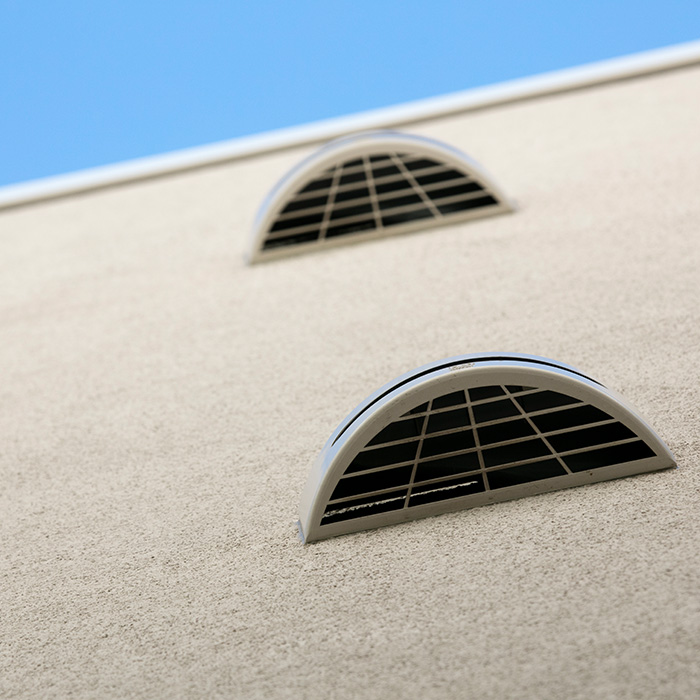Exemplary energy footprint
Sustainability & the passive house standard
In terms of sustainability, Bahnstadt is pursuing an ambitious concept. Heidelberg’s newest district is home to nothing less than the world’s largest passive house settlement. All buildings in the new district are constructed in compliance with the strict “passive house” energy efficiency standard. The energy requirements for properties designed in this way are 50-80% lower than with conventional types of residential buildings. Energy monitoring in Bahnstadt by the Passive House Institute in Darmstadt shows that targets are being met. The residential buildings studied require on average just 54 kilowatt hours per square meter per year of district heating for all applications (heating, hot water, distribution and storage losses) – a very respectable carbon footprint.


Wood-powered CHP plant supplies renewable energy
Any remaining heat and power requirements are covered through environmentally responsible means. A wood-powered CHP plant in the neighboring district of Pfaffengrund supplies Bahnstadt with district heating from 100% renewable energy. That benefits not only the environment. It means passive house residents are also largely immune to fluctuations in energy prices. In a survey, Bahnstadt residents declared themselves very satisfied with living in passive houses, with the air quality, and with the ambient temperatures in winter.
“Smart” electricity meters keep energy consumption transparent
Bahnstadt households are also all equipped with smart electricity meters to improve energy efficiency; these provide constant updates on energy consumption and costs arising. The city of Heidelberg has also developed a power saving concept to improve energy efficiency in the district for all Bahnstadt residents, investors, and planners. The concept is designed for construction planning as well as for subsequent use.
A further component of energy efficiency and sustainability is the street lighting concept in the new district. LED lamps and a telemanagement system, which enables lighting to be adapted to actual requirements, ensure comparatively low energy usage in this area too.
New home for wall lizards
The sustainability concept also includes responsible use of land areas. A conscious decision was taken not to use environmentally valuable outdoor areas. Furthermore, biodiversity has an important role to play in Bahnstadt. Around 3,500 sand and wall lizards were relocated to specially created new habitats and dry stone walls at the edge of the site when construction work started. Since further relocation efforts have been necessary as construction work has progressed, new compensatory areas are now being created as a habitat for the lizards near the TANKTURM tower.
Contact Heidelberg Environment Office
Amt für Umweltschutz, Gewerbeaufsicht und Energie
Prinz-Carl, Kornmarkt 1
69117 Heidelberg
Telefon: +49 6221 58-18000 und 58-18010
E-Mail: umweltamt@heidelberg.de
Mehr zum Thema auch auf www.bahnstadtpfad-heidelberg.de
